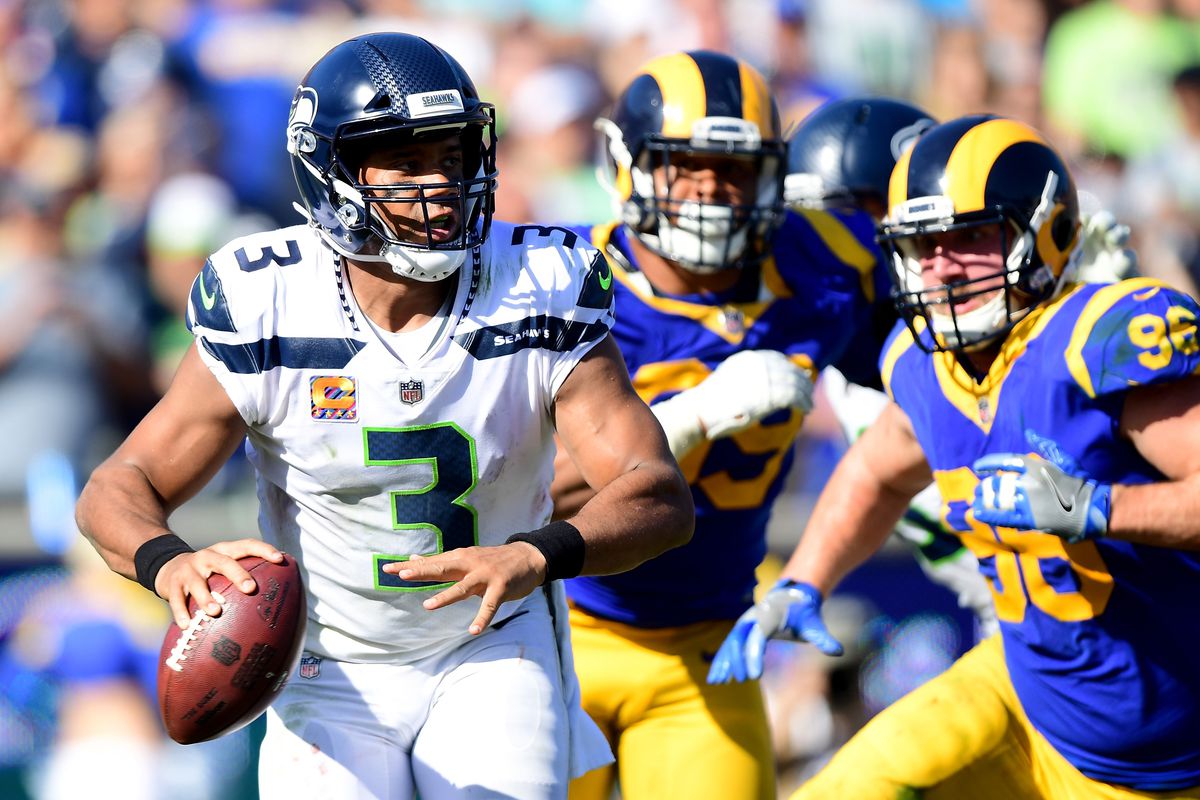
One minute I was spoon-feeding baby food into our six-month old’s mouth. The next, it felt like someone inserted a giant knife into my lower back and twisted it. Then I was lying on the floor, looking at my son in his high chair as he began to cry, unsure of what was happening. I remember wanting to scream at the top of my lungs in pain, but somehow refraining from doing so, not wanting to upset my son further.
Within five minutes, the paramedics were coming through the front door and loading me onto a stretcher. There was an ambulance in our driveway. It was a dreary morning in early January 2011, typical weather for Seattle. As they loaded me into the back of the ambulance, I could make out a neighbor standing outside, looking at me and wondering if I was okay.
Seattle was a very different town back then. Amazon had not yet taken over our downtown or our lives. Pete Carroll had just arrived a few months earlier. Russell Wilson was not yet a household name, at least not here. A middle-class family could still afford to buy a home here. It was still possible to find a parking spot downtown.
Sports wise, Seattle was also a different place. The Mariners weren’t great, but they weren’t as horrible as they have been as of late. The Sounders were here, but still relatively new. Though they had already been setting records for attendance and wins, they had not yet won the MLS Cup.
The Seahawks were a mediocre-to-bad team in a mediocre to bad NFC West. There was no Beast Mode. There was no Legion of Boom.
As I rode to the hospital that day, sports was the last thing on my mind. Not being in excruciating pain was. Being able to walk on two feet again was another concern.
I was checked in to the emergency department at Northwest Hospital in Seattle, just a couple of miles from my house. While waiting to be seen by a doctor, I did what most people do, and I turned on the television. I was rocked by the shooting of U.S. Congresswoman Gabrielle Giffords in Arizona, which had just happened moments earlier. It took my mind off of my own current situation, though in the worst possible way.
What was happening to my life and to my country?
And to think I had been engaged in the most mundane of activities with my firstborn son only an hour earlier.
When the doctor finally arrived and assessed my situation, it was not at all what I expected. Somehow I thought he would say something like, “Well, after fifteen years of chronic lower back pain, you have finally broken your back for good. Your life will never be the same and you will never walk again.” Instead, what he said was both more positive yet also somehow more depressing. “You had a really bad back spasm, that’s all. We will give you a shot to relieve the pain and send you home with some medication. You should feel better in a few days.”
Does more or less run-of-the-mill back pain sometimes involve riding in ambulances to the emergency room? Apparently, sometimes it does.
Prior to that day, I naively thought of a stay in a hospital as something not unlike a stay in a hotel with room service. They bring you anything you need and you don’t have to worry about anything.
The reality is that after giving me a second shot into my lower back—the first one wasn’t enough to allow me to move my legs without severe pain—they put me into a wheelchair, handed me my paperwork, and gave the wheelchair a gentle push towards the exit so that my room could be used for someone with greater need.
I called my wife to come and pick me up. And then I sat under the awning of the emergency room entrance as people came and went while a soft cold rain fell from the sky. In my sweatpants, with my bed-head hair, in a now-narcotic state, I shuddered to think what others must have thought of me sitting there like that. I might as well have been an extra from the filming of Drugstore Cowboy. I wondered if that’s how people looked at Kurt Cobain in his final, drug-addled days.
After my wife brought me back home, we had to decide where to put me. We only had a loveseat in our living room, not big enough for me to stretch out on. Our bed didn’t seem right, since the baby often slept with us and having him crawl all over me with my injury was also ruled out.
What we did have was the old detached garage off the alley. The previous residents turned it into something of a studio space. They installed a space heater and laid down carpet and replaced the garage door with French doors. My wife and I put an old secondhand couch and an old tube TV with a rabbit ear antenna out there. It was before the era of streaming services and endless wifi. We weren’t television people. We sometimes went out there to watch a movie on something called a DVD player.
What I did that entire day was convalesce on that old couch and watch the NFL playoffs with scratchy reception while the rain outside turned to a wet snow.
By now, Seahawks fans know where this is going. Up until that day, the Seahawks were the joke of the league, backing their way into the playoffs with a losing record. Because they won their division, they had home field advantage for their matchup with the New Orleans Saints.
Nobody expected the Seahawks to win that day. Even on the road, the defending Super Bowl champion Saints were favored by ten points.
But when Marshawn Lynch broke a tackle at the line of scrimmage, and then broke many more, he launched the beginning of a sports era in Seattle. Not only is the Beast Quake run considered the best play in Seattle sports history, many consider it to be the best run in NFL history.
How did I react, my whole body numb from medications, my head groggy, as I watched the fuzzy reception on my old television set while lying on a ratty old couch in an old garage in my north Seattle neighborhood?
I’m certain that the hand at the end of my arm formed into a fist and shot skyward. I managed to let out a bloodcurdling scream that could be heard miles away. For a moment, I didn’t even feel my back. I felt nothing but joy to be alive at that exact moment in time in that exact place, and I’m certain I will never forget it




